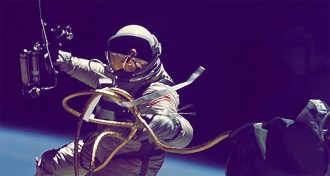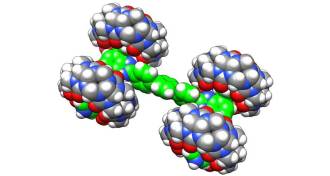All Stories
-
 Astronomy
AstronomyRumors swirl that LIGO snagged gravitational waves from a neutron star collision
Telescopes seem to be following up on a potential gravitational wave sighting.
-
 Genetics
GeneticsIf you’re 35 or younger, your genes can predict whether the flu vaccine will work
A set of nine genes predicted an effective response to the flu vaccine in young people, no matter the strains.
-
 Life
LifeWild yeasts are brewing up batches of trendy beers
Wild beer studies are teaching scientists and brewers about the tropical fruit smell and sour taste of success.
-
 Cosmology
CosmologyMap reveals the invisible universe of dark matter
The Dark Energy Survey reports a new tally of the dark universe.
-
 Astronomy
AstronomyHere’s what the Science News family did for the eclipse
On August 21, 2017, the path of a total solar eclipse went coast to coast across the United States. Here are our dispatches.
-
 Science & Society
Science & SocietyOn social media, privacy is no longer a personal choice
Data from the now-defunct social platform Friendster show that even people not on social media have predictable qualities.
-
 Anthropology
AnthropologyNitty-gritty of Homo naledi’s diet revealed in its teeth
Ancient humanlike species ate something that damaged its teeth.
By Bruce Bower -
 Life
Life‘Darwin’s Backyard’ chronicles naturalist’s homespun experiments
In the new book Darwin’s Backyard, a biologist explores Charles Darwin’s family life, as well as four decades’ worth of his at-home experiments.
By Sid Perkins -
 Tech
Tech50 years ago, NASA whipped up astronaut waste into rocket fuel
In 1967, scientists found a way to turn human waste into rocket fuel.
-
 Tech
TechMeet the Bobcat Nanowagon, the world’s smallest monster truck
Chemists are scratching their heads over the wreckage of minuscule monster trucks.
-
 Science & Society
Science & SocietyPatience is one virtue scientists must embrace
Acting Editor in Chief Elizabeth Quill discusses how being patient isn't always easy in scientific work.
-
 Astronomy
AstronomyInquiries about the moon’s twilight zone, and more reader feedback
Readers had questions about the moon's tidal locking, quantum communication, microneedles and more.